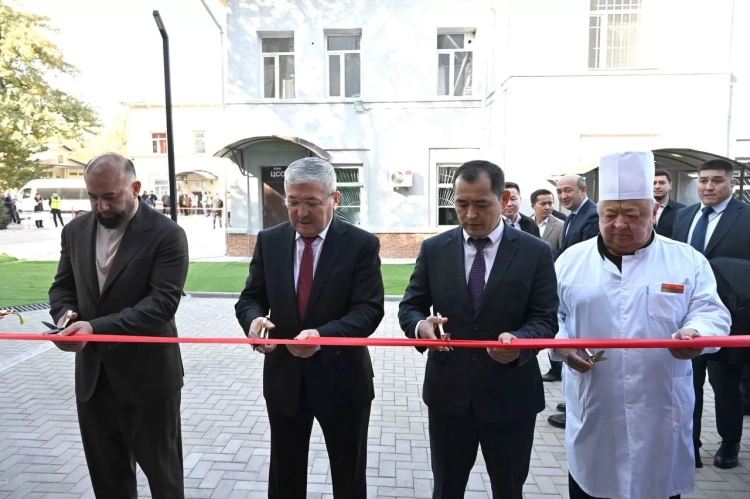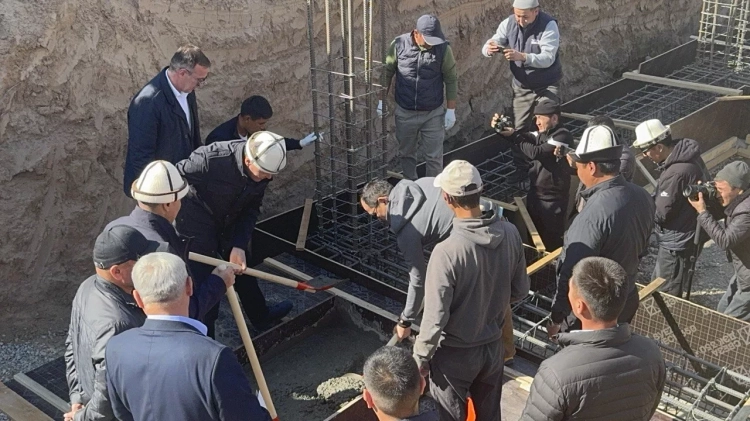Healthcare in Osh
Great attention was paid to the development of healthcare in Osh. Before the October Revolution, the residents of the city were deprived of medical assistance. In 1898, there were two small hospitals in the city, served by a doctor, a paramedic, and a midwife. There was one doctor for every 70,000 people.
As a result of the lack of medical assistance, the population suffered from trachoma, malaria, and other diseases.
During the years of Soviet power, a hospital was built that had surgical, infectious, therapeutic, and maternity departments. An X-ray and therapeutic office and a blood transfusion room were organized at the hospital. Dentists, ophthalmologists, and pediatricians treated patients here. The outpatient clinic served an average of up to 500 people a day. The city had a skin and venereal disease dispensary, 2 outpatient clinics, 3 medical aid points, and 2 pharmacies. In 1939, 2 million 455 thousand rubles were allocated for the needs of the city's healthcare.
Osh Central Hospital was established in 1968 (with a capacity of 320 beds). In 1986, there were 73 doctors and 151 mid-level medical staff. Medical consultations were conducted in 15 medical specialties. Significant changes in the hospital occurred during the years when S. Supanaliev was the chief physician. He began his career in 1960 after graduating from the Frunze Medical Institute as a forensic medical expert at the Frunze District Hospital in the Osh region, where he worked until 1962. He then worked for 6 years as the deputy chief physician for medical affairs and simultaneously as a surgeon. From 1968 to 1994, that is, for 26 years, he served as the chief physician of the city of Osh. During his tenure as chief physician, S. Supanaliev made a significant contribution to the development and improvement of healthcare in the city, particularly in creating a material and technical base and equipping hospitals and outpatient clinics with new technology and equipment, staffing, implementing scientific achievements in medicine into the practice of healthcare institutions, and applying modern treatment methods in the healthcare system of Osh.
The number of healthcare institutions increased from 9 in 1968 to 30 in 1993, most of which were built according to standard projects funded by the local budget. The number of specialists with higher education increased from 127 in 1968 to 710 in 1993. At the same time, the bed capacity also increased, reaching 2100 beds in 1993 compared to 380 in 1968. Thanks to these measures, child mortality rates steadily and systematically decreased, reaching 28.4 per thousand live births in 1993 compared to 62.5 in 1968. A similar decrease was observed in adult mortality rates. Residents of Osh receive medical assistance in 31 areas. The provision of medical assistance at the outpatient stage has been improved: in outpatient clinics, women's and children's consultations, etc.
S. Supanaliev was the first to open a scientific and production center for traumatology and orthopedics in southern Kyrgyzstan, where scientific observations on the most important problems of medical science are conducted. Eight candidates of sciences and 3 applicants work in the city's healthcare system. Six of the candidates defended their dissertations based on materials from urban healthcare institutions. A self-sustaining southern regional center of the Moscow branch of laser therapy has been opened at the city hospital, equipped with 10 laser devices for treating more than 30 nosological units of diseases. Since 1992, the health management, accounting, and several services in the city have been computerized and automated. Ultrasound, gastro-fibroscopy, angiography, and other methods of patient examination are widely used. Scientific achievements are widely applied in practice. Annually, more than 15 types of elements of rational proposals are implemented in practice. Of the 70 proposals implemented, 5 received author certificates. S. Supanaliev has trained 24 specialists who successfully work in cities and regions of our republic. S. Supanaliev himself has 5 rational proposals, one of which has received an author certificate. His work has been repeatedly recognized with government awards.
Among the numerous medical workers, it is worth noting Yusup Kasymov, a candidate of medical sciences, a distinguished physician of the republic, who worked as the chief surgeon for over 30 years; Ibragim Omurbekov, who served as the chief physician of the dispensary from 1966 to 19%; and Manas Zhaanbaev, a therapeutic physician.
The city paid special attention to children's health. The Children's Regional Hospital in Osh, with 575 beds, was opened in 1964. The specialized departments currently in operation include: cardiology — 50 beds, allergology — 50, hematology — 50, surgery — 80, urology — 40, ophthalmology — 40, otolaryngology — 40, infectious diseases — 40, therapy — 60, somatic — 125, including pediatric — 40, pulmonology — 20, gastroenterology — 15, and resuscitation — 10. There are also auxiliary units: radiology, dentistry, electrocardiography, functional diagnostics, allergology; cardiology offices and physiotherapy; laboratories; clinical diagnostic, bacteriological, and biochemical. The number of doctors in 1986 was 102, and the number of mid-level medical personnel was 266.
Higher educational institutions in the city of Osh












































